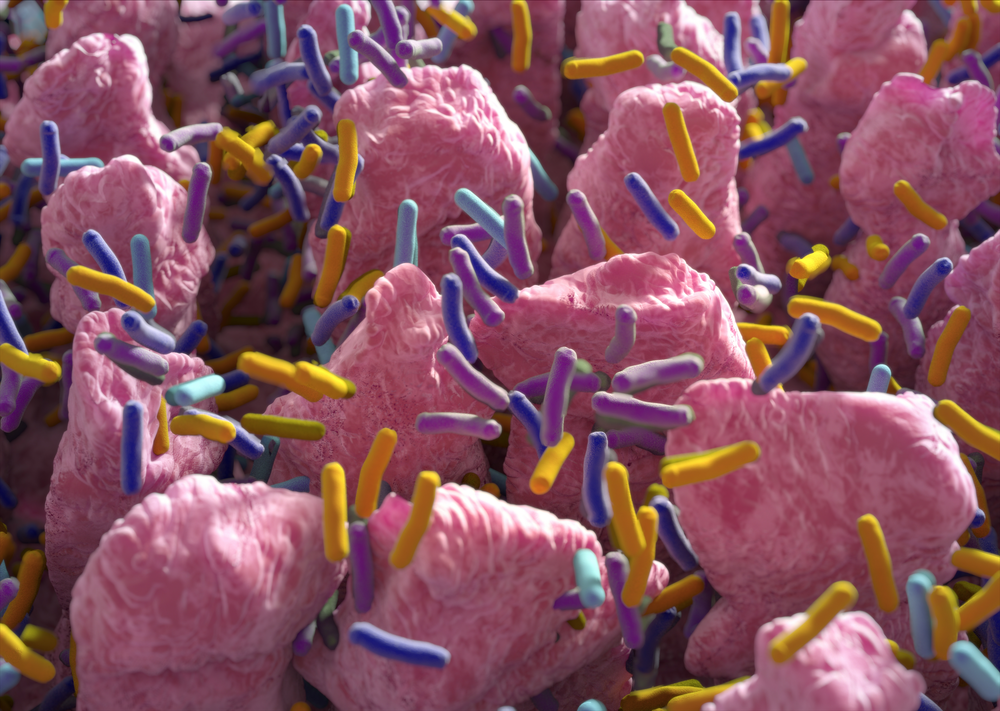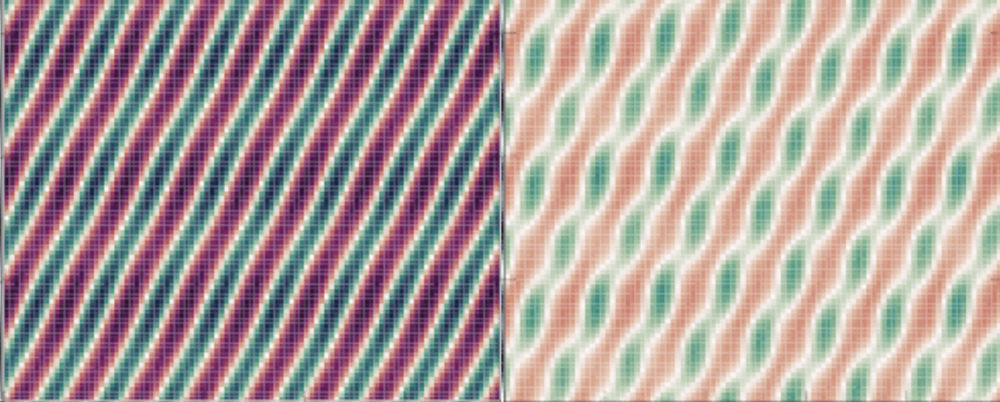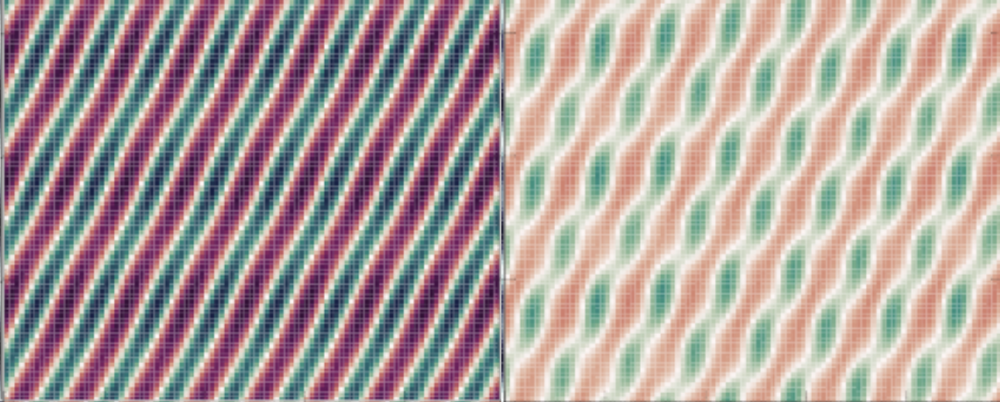• Physics 15, 146
Fluid dynamics simulations suggest that the varying flow speed inside the small intestine maximizes nutrient absorption while minimizing excess bacteria.
Anatomy Insider/stock.adobe.com
The bacteria living in the human gut, also called the microbiome, help with metabolism, but they also consume nutrients and can grow out of control. Now biophysicists have shown theoretically that the body can manage bacterial growth by regulating the flow of fluid through the small intestine using two different patterns of muscular contractions [1]. Their model accounts for the fluid dynamics of intestinal liquids and for the effects of fluid flows on the growth of bacteria. The researchers hope that explaining the fluid flow will contribute to a deeper understanding of the overall functioning of the gut.
The muscles of the small intestine have two different patterns of contraction, but researchers don’t know why, since one would seem to be enough, says Karen Alim of the Max Planck Institute for Dynamics and Self-Organization in Germany. In one pattern, called peristalsis, wave-like contractions in the gut muscles along the length of the intestine drive strong fluid flows, both forward and backward, with the average flow pushing the liquid forward through the gut. In the other pattern, called segmentation, contractions of the muscles circling the gut wall drive a weaker flow with a more complex velocity structure that causes more mixing. Researchers have previously simulated fluid flows in the gut, but Alim and her colleagues wanted to explore the consequences of the flow produced by the two different muscle contraction patterns, looking for effects on bacterial growth and nutrient absorption.
“Living systems are typically very complex,” says Alim. “Our aim was to gain a basic physical and mechanistic understanding of the workings of the small intestine.” In the simulations, Alim and colleagues approximated the small intestine as a uniform cylinder with a nutrient-laden fluid flowing through. Using the equations of fluid dynamics, they simulated the effects of gut contractions in the two main patterns as both the bacteria and gut wall competed for nutrients. They also accounted for the growth of the bacterial population as it moved through the gut and consumed nutrients. Although data on real intestinal flows are scarce, the researchers were able to determine basic parameters for their simulations from flow velocity measurements in mouse intestines.
Peristalsis is the main driver of the forward flow, and the team found that the strength of the peristaltic contractions affects the average flow speed, with two important consequences. The slower the flow speed, the longer the nutrients remain in the gut, enabling the body to absorb more nutrients. Slower speeds, however, also give the bacteria more time to grow in number before being flushed out. In the simulations, the segmentation pattern tended to churn and uniformly spread the initially clumpy distribution of nutrients, directly aiding nutrient absorption.
The researchers believe that their results explain why the gut employs these two distinct modes of muscular contraction. As they showed in further simulations, if the gut used peristalsis alone, adopting slower speeds to improve nutrient extraction would also risk letting bacteria build up to dangerous levels. So when the gut enters the peristalsis mode, it makes sense to do so at relatively high velocity.
But alternating periods of peristalsis and segmentation lowers the effective speed of transport, without maintaining the low speed for too long. The segmentation periods also boost the nutrient uniformity and efficiency of absorption. Using the simulations, Alim and colleagues found that the gut, by alternating the two patterns in the right way, can optimize the process.
“The key parameter turns out to be the average flow velocity,” says Alim, “which the small intestine can easily control by changing its contraction patterns. This allows the gut to optimize nutrient uptake while keeping bacterial growth at bay.”
“This elegant study considers what is almost always an overlooked factor in research on gut dynamics, the hydrodynamic flow,” says biophysicist Claude Loverdo of Sorbonne University in Paris. “The authors convincingly show that the gut exploits a clever strategy of switching between different flow regimes, using a pattern with slower velocity just after eating to absorb nutrients, followed by a phase with higher velocity to flush bacteria.”
–Mark Buchanan
Mark Buchanan is a freelance science writer who splits his time between Abergavenny, UK, and Notre Dame de Courson, France.
References
- A. Codutti et al., “Changing flows balance nutrient absorption and bacterial growth along the gut,” Phys. Rev. Lett. 129, 138101 (2022).
Subject Areas
"flow" - Google News
September 23, 2022 at 10:05PM
https://ift.tt/FsfeqiV
Optimizing Flow Speed is Essential for the Gut - Physics
"flow" - Google News
https://ift.tt/HmB2gaI
https://ift.tt/Xewxjqt
Bagikan Berita Ini



















0 Response to "Optimizing Flow Speed is Essential for the Gut - Physics"
Post a Comment